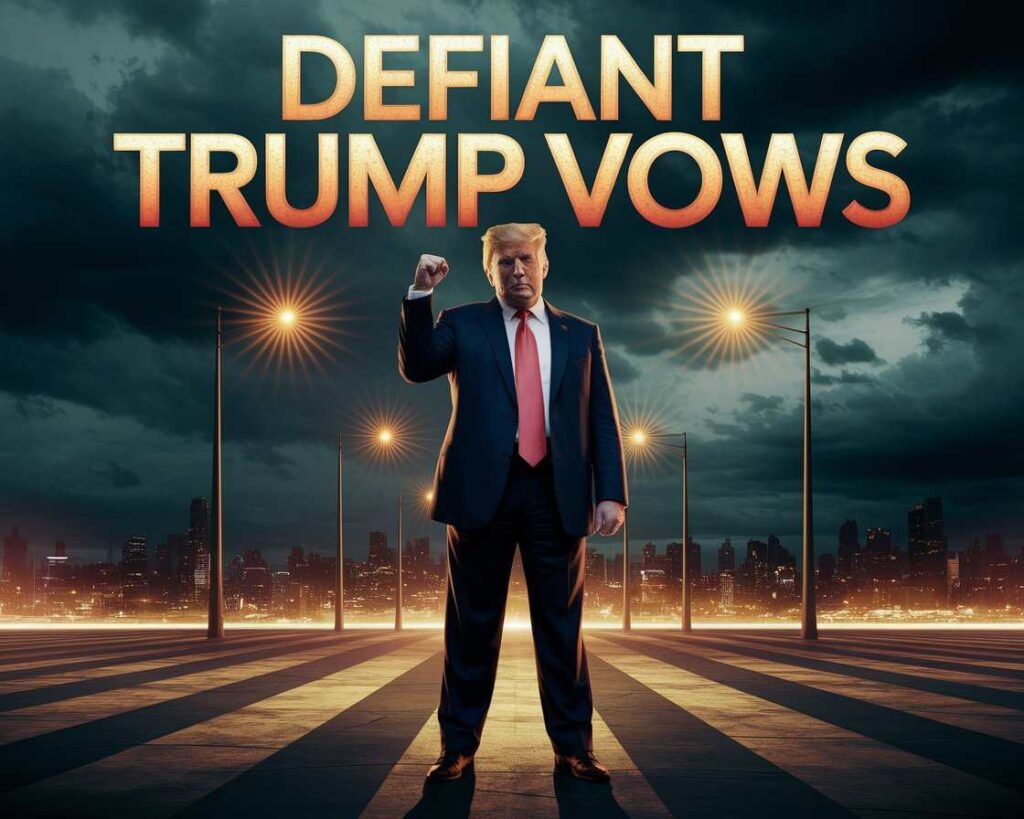Tariffs have always been a polarizing economic tool, and President Donald Trump’s recent sweeping tariffs on imports have been no exception. These tariffs sent ripples through global markets, jarring investors and business leaders. The policy promises to return jobs to the U.S. while triggering a complex chain reaction across global financial systems.
This blog post will unpack the impacts of Trump’s tariff strategy on the global economy, the markets’ immediate reaction, and what lies ahead for investors and business leaders navigating these turbulent waters.
Table of Contents
Trump’s Defense of Tariffs
“Sometimes you have to take medicine to fix something,” said President Trump aboard Air Force One when defending his tariffs’ impact on domestic and global markets. This sentiment has shaped the administration’s strategy, emphasizing a bold, and some would argue abrupt, move to address long-standing trade imbalances and industrial job loss.
Trump has doubled his promises that his policies will return major investments and manufacturing jobs to the U.S., strengthening the nation’s economy significantly. Treasury Secretary Scott Bessent has bolstered his defense, insisting that these changes are part of an “adjustment process” to create “maximum leverage” over countries with unfair trading practices.
Commerce Secretary Howard Lutnick affirmed the imposed 10% “baseline” tariff was just the beginning, with higher tariffs targeting the worst offending countries to follow shortly. This approach underscores the administration’s belief that short-term pain will yield long-term gains for the U.S. economy and workforce.
Immediate Market Reaction
While President Trump’s defense of tariff policy remains steadfast, global financial markets have not responded kindly.
- Asian Markets: The Nikkei 225 in Japan dropped 6.3%, and the Hang Seng in Hong Kong plummeted nearly 9.8%, showcasing the vulnerable sentiment fueling the region’s economies.
- U.S. Stock Indexes: The U.S. market didn’t escape unscathed, as all three major indexes fell over 5% by the week’s end. The S&P 500 recorded a nearly 6% drop—its worst performance since 2020.
- Middle East: Saudi Arabia’s stock exchange lost nearly 7% on Monday, its largest single-day loss since the pandemic.
Global uncertainty continues to dominate market sentiment, with investors fearing heightened global trade disputes and a protracted economic slowdown.
Analysts Split Economic Predictions
The actual long-term economic implications of these tariffs are sparking heated debate.
- JP Morgan’s Outlook: The financial giant predicts a 60% chance of a U.S. and global recession due to Trump’s tariffs. Market turbulence and the potential for retaliatory foreign tariffs create fertile ground for an impending recession.
- Treasury Secretary’s Viewpoint: Scott Bessent rejects the recession claims, pointing instead to negotiations with over 50 nations to reduce trade barriers. He maintains the stock market’s immediate reaction is temporary, viewing it as part of a “necessary shift.”
This divide in expert opinions leaves investors and business leaders scrambling to devise strategies in an uncertain landscape.
Official Stance and Timeline
Despite economic jitters, implementation timelines remain uncompromising. Commerce Secretary Lutnick confirmed that the higher tariffs targeting about 60 countries, deemed “worst offenders,” would come into effect on April 9.
China has entered the trade battle by announcing a 34% tariff on all U.S. imports, effective April 10. Other countries, like Vietnam and Indonesia, have sought delays or opted against retaliatory measures to maintain trade relationships with the U.S. Meanwhile, European and Asian nations are voicing concerns but remain engaged in active negotiations to reduce the collateral impact.
Impact on Investors and Businesses
For investors and global business leaders, these tariffs present challenges beyond stock market volatility. While short-term pain is evident, agile businesses could find opportunities amidst the disruption.
- Supply Chain Reassessment: With tariffs dramatically altering the cost structures of imports and exports, companies may focus on restoring production or diversifying supply chains to mitigate risks.
- Market Diversification: Businesses dependent on specific international markets may need to explore opportunities in underutilized regions to offset potential revenue losses.
- Focus on Local Markets: Savvy leaders may turn to domestic markets and adopt a “Made in America” approach to capitalize on patriotic consumer sentiment.
- Equity Rotation: Some investors may start rotating funds toward sectors that could thrive under a protectionist trade regime, such as local manufacturing or agriculture.
FAQs About Trump’s Tariffs
1. Why were the tariffs introduced?
The tariffs primarily target industries where the U.S. government perceives significant trade imbalances, such as steel, electronics, and agriculture. The goal is to pressure countries with unfair practices to renegotiate more balanced trade agreements.
2. Do these tariffs benefit the U.S.?
The goal is to bolster U.S. manufacturing and create jobs. However, the short-term impacts include higher consumer prices and market volatility. The benefits may only materialize over a longer timeline.
3. How should investors adjust their portfolios?
Investors might consider diversifying their portfolios internationally while avoiding overexposure to industries most affected by tariffs. Consulting with a financial advisor for tailored strategies is also wise.
4. What industries are most impacted?
Steel, agriculture, electronics, automotive, and textiles are key affected industries. Businesses heavily dependent on imports or exports to tariffed nations are grappling with higher operational costs.
5. What’s next on the timeline?
Higher tariffs on specific nations will take effect on April 9, while China’s retaliatory measures are slated for April 10. Ongoing negotiations may influence adjustments or delays.
Navigating the Road Ahead
President Trump’s tariff policies have undeniably sparked a storm on the global stage, prompting shock waves in financial markets and turmoil for multinational businesses. However, this policy shift also represents a pivotal moment for leaders willing to adapt and innovate in response to these changes.
Staying agile and informed will be critical for investors and business professionals in the months ahead. While uncertainties persist, opportunities lie in the creative recalibration of strategies, whether in operations, supply chain management, or portfolio diversification.
Keep your ear to the ground, monitor market developments closely, and consider seeking professional expertise to adjust your tactics effectively. The road may be rocky, but preparation will always yield an advantage.

